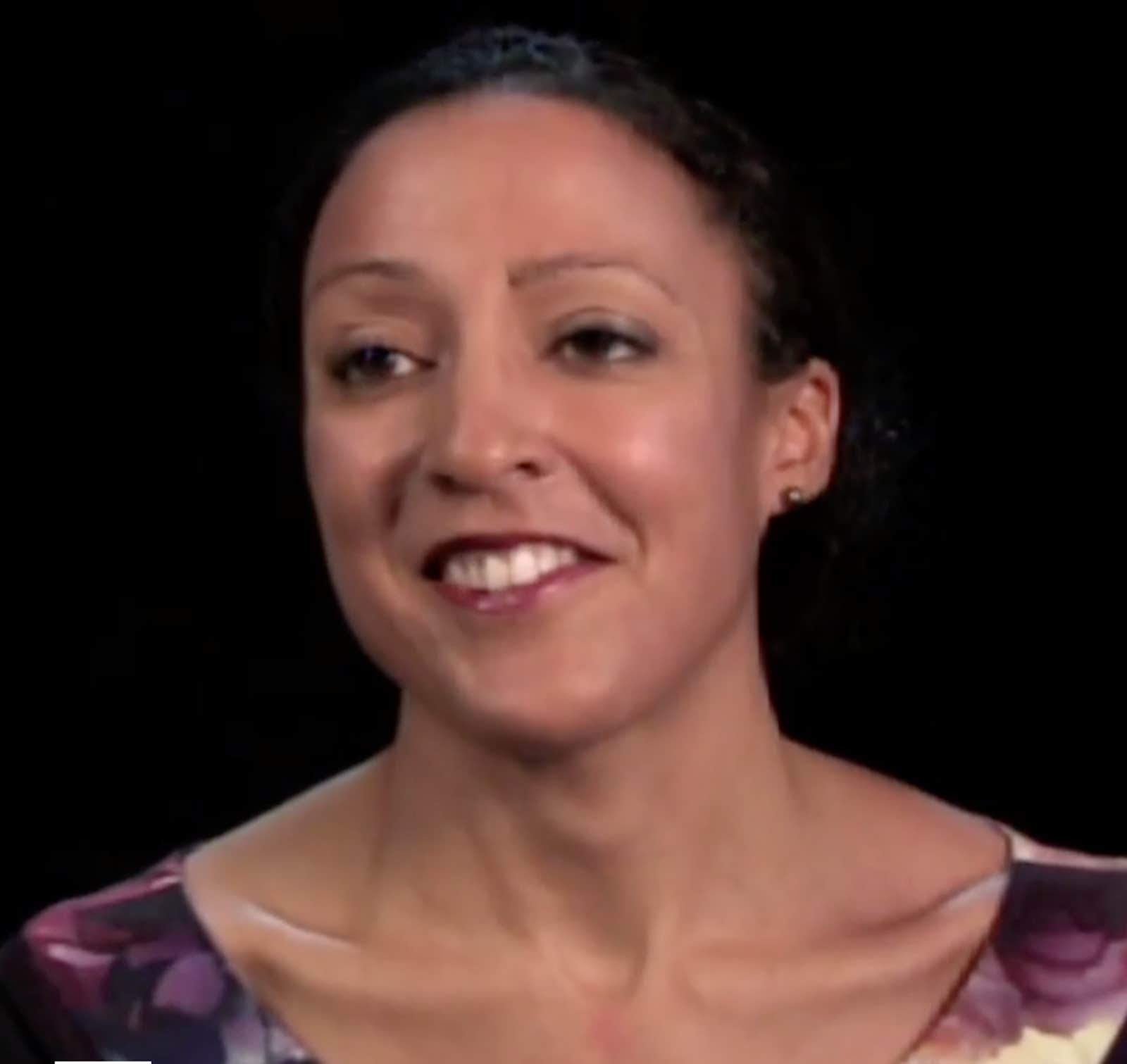When I asked Mazviita Chirimuuta why philosophers were so crazy about color, she smiled, as if she sensed my question had an implied criticism of philosophy’s penchant for chewing more than it bit off, to paraphrase what a wit once said of Henry James. But then she offered an eloquent answer. “Philosophers are motivated to study color in detail because the senses are our means to understanding the world,” she said. “Does that mean all of our knowledge is subjective? And if so, is that a bad thing? Underlying the debate about color is this bigger question about the nature of knowledge, which comes to us by means of our senses.”
Philosophers and scientists have been parsing the meaning of color since at least the heady 1600s when Newton “stuck a needle-like bodkin in his eye and pressed with it until he saw white and colored circles,” as author Leonard Mlodinow kindly informed us. With somewhat less pain, physicists demonstrated color is determined by wavelengths and surface reflection. Physiologists detailed how specific anatomy in our eyes and brains tells us what is blue or red. In her recent book, Outside Color, her first, Chirimuuta boldly concludes that color should be defined not by the world outside or inside our heads, but an interaction of both.
Chirimuuta, 37, is an assistant professor in the Department of History and Philosophy of Science at the University of Pittsburgh. She has been captivated by the subjectivity of color since she was a kid, when, she explains in our interview, she had one of those existential kid questions about the world: What is the real color of the ground? Growing up in England, her mother, an ophthalmologist, fostered her curiosity in science. (Her father is from Zimbabwe.) In high school, she read The Man Who Mistook His Wife for a Hat, by Oliver Sacks, and was struck by “how people’s whole worlds could be changed and warped in completely unpredictable ways.” She grew up to earn a Ph.D. in visual neuroscience from the University of Cambridge.
Our interview unreeled inside the University of Pittsburgh’s gothic Cathedral of Learning. As an academic in philosophy and neuroscience, Chirimuuta said, she wasn’t accustomed to speaking to a popular science audience. Did she have to worry about using philosophical or technical language? I assured her that being herself was the best policy, and as the interview reveals, she didn’t have to worry at all. Her explanations were thoughtful and articulate, free of the clouds of jargon.
Interview Transcript
How does a physicist typically explain color?
A lot of people have the idea that if you look at color from the perspective of physics, then color is simply wavelength of light. Everyone has seen Newton’s spectrum—if you take white daylight and split it into all of its different component colors, you get a rainbow, and each color in that rainbow has a specific wavelength of light. So people think, “Oh well, color is just wavelength of light and in the world around us, different objects reflect different wavelengths of light; therefore we see them as having different colors.” But actually, it’s not like that.
Because if you actually look at the wavelengths that are reflected off say, red objects, or blue objects, they’re not ever one specific wavelength that we always experience and say “oh, that’s blue, that’s just that one wavelength of light.” In fact, depending on the context, the same wavelength of light could be seen as different colors because of color constancy, so the brain, or our visual system, is always taking into account what’s going on in the surrounding environment. The color of the light that is illuminating objects will affect the color that we perceive the object to have in some cases and in some cases not; so there’s no one-to-one correlation between wavelength of light and the color we perceive.
How does a neurobiologist explain color?
Someone who has ordinary human color vision has three kinds of different cone receptors in their retina. The cones are the photoreceptors that are sensitive during daylight-level illumination, so when the world is bright enough for us to see colors well, our cones are operating; and they have sensitivities to wavelength which differ from each other, so they provide the very first input to the color visual system.
Because our cones respond differently to wavelengths, we see objects as having different colors, but again, there’s no one-to-one relationship—“your long wavelength receptor is operating, therefore you see red”—it really depends on the balance between what the different cones are receiving from the light in the world around them and then how the brain interprets that in terms of the context of the whole scene.
What are the “outer” and “inner” views of color?
There’s a long tradition in philosophy that sees the “outer” and “inner” as an absolute dichotomy and I trace that back to, at least, the 17th century when science was being developed in the way that we now know it—the idea of physics being the science of things as they are, independent of the human mind. Then the question arises: There are some parts of experience of the world which seem to be subjective, or at least informed by or shaped by the human mind, so what do we say about those? Are they purely subjective? Is it just some part of our inner consciousness and therefore, do we make this radical break between physics and psychology?
So that kind of dualistic approach, that’s always associated with René Descartes. He famously proposed mind-brain dualism and said that the mind was a completely different substance from the material world, but I think that tendency to see the inner world as something separate from the outer world is more pervasive than just a theory of mind-brain dualism—it’s really a way of trying to understand nature as something entirely objective. Then there’s this problem about how we fit the mind back in, and I think that’s something that will take a lot of philosophical work to really think through in a more satisfactory way.
What is your theory of color?
Going back to that problem about this dichotomy between the inner and outer, there’s been this tendency to say, “well, anything that’s subjective in our knowledge or in our experience isn’t on the same footing as things that we know about as being completely objective.” I say that this sort of difficulty that people have of accepting subjective aspects of experience and knowledge then leaves people to say well, “if color’s not part of physics, then it must be a complete illusion”; and I’m saying well, actually we need a way of theorizing subjectivity in such a way that we’ll just acknowledge that there are parts of our experience and our perceptual knowledge of things that are generated by the particular ways that we interact with the world.
As humans who have three kinds of photoreceptors, or two, or sometimes one kind of photoreceptor for daylight vision—that means we interact with the world in a particular way that informs our experience of the world. If our visual systems were built differently, our whole visual experience, and probably our knowledge of the world, would be quite different; but there’s nothing inherently problematic about that. So I think of color as a property, or something that can only be understood in terms of the particular ways that we interact with the world. That’s my way of saying that we should try and see those inner and outer domains as not as separate from each other as we think. Really, there’s this constant back and forth between the two and that’s how visual experience is generated, and knowledge maybe more generally.
How have you changed the debate about color?
The way the debate has standardly gone is to say, “well, if color is anything, if color exists, then it’s a property of objects.” So if you’re a realist, you’ll say “yeah, the maroon property belongs to this seat; the whiteness property belongs to that wall.” If you’re an anti-realist, you’ll just say “no, no objects have those properties; color doesn’t exist.” What I’ve done is say that actually, a better way of thinking about color is not as a property of objects, but as a property of interactions that perceivers have with objects. In my view, which is the view I call color adverbialism, there are perceptual processes that are going on all the time. Every time we look around a room, light’s bouncing off the walls into my eyes and my brain’s processing this information and I’m saying that that whole extended interaction between myself and my surroundings, that’s the thing that has color, not the objects that I see. So when I talk about what’s there in my surroundings, I say that color is my way of seeing those things, so I see that wall in a white way, so really the whiteness is modifying that perceptual experience. It’s more a property of the experience or that process, that activity I’m doing, rather than the wall itself.
What’s the evolutionary purpose of color?
That’s a really fascinating debate that’s ongoing within the science. One idea about the particular color visual systems that primates like us have—the trichromatic visual system that we have—people have speculated that well, having the different long and medium wavelength receptors in our retina, that helps us distinguish ripe fruit from green foliage. So there’s this idea that different animals have particular kinds of visual systems that make ecologically relevant objects more apparent to them. If an animal needs to feed from a specific kind of tree, evolution will engineer a visual system that will help them see those things. Bees have very good color vision; they use it for foraging, for finding pollen from flowers.
There are all these explanations and stories one could tell. It’s very hard to ever find smoking guns with these things, but there’s good reason to think that the reason why different animals have very different kinds of color visual systems is related to the particular kinds of tasks that they’re engaged with, whether it’s feeding or navigating or escaping from predators.
Do big-brain humans have a richer experience of color than other animals?
No, because an interesting thing is that most animals that aren’t mammals have more interesting and more exotic color visual systems than we have, so birds typically have many more kinds of photoreceptors, like five; there are some kinds of sea creatures, like the mantis shrimp, that have kinds of color receptors that go into the teens. If we could compare our color visual experience with that of a pigeon or a mantis shrimp, it would probably seem quite boring.
What do you mean by “perception of color”?
Typically when we talk about perception of color, we talk about the conscious visual experiences that we have, because if you have vision, then color is such a dramatic part of our conscious experience of the world. Most of the color debate is really framed in terms of these very bright, catchy, qualitative experiences that we have of red and yellow and all the colors of the rainbow.
But that said, most of the processing behind color visual experience is unconscious, like when we have color constancy and there are lots of computational theories about how color constancy works. We can’t introspect on that, that’s all unconscious to us. We just know its results.
Why did people see the notorious dress as different colors?
There’s a kind of ready-at-hand explanation that comes from thinking about color constancy. If you take that image of the dress, it depends on whether you think that the dress has been lit by a [shadowy] bluish colored light—if you interpret the scene that way, then you’ll see it as white and gold; if you think it’s not in that kind of lighting, you’ll see it as blue and black. So people have explained it in terms of what assumption each individual is making about the lighting in the wider scene, which is why the photograph itself is ambiguous, because the lighting in the scene can be interpreted in different ways.
This is what I mean about color constancy being completely unconscious to us, but that’s how vision scientists model it. It’s like there’s a little algorithm in your brain checking what the illumination is doing and the direction of lighting and what color it is, and then balancing that against the object that’s seen; and it just seems that different people’s inner algorithms work slightly differently with the dress, which is why you get this disagreement.
Has our experience of color changed over time?
In terms of talking about experience and how it’s become different over time, I think it’s really interesting to look at the cultural evolution of color. If we just look at the history of Western civilization, or if we look at texts from ancient Greece, how color is written about is very different from how we would write and think about color now, which suggests that people experienced the visual world—at least to describe it—in a way that was quite different. For example, they would group colors, certain colors, together that we would think are different. A famous phrase in Homer, “the wine dark sea”—when we read that we think well, the sea’s blue, it’s not red. But the word that he was using was probably for some dark shade that wasn’t associated with blue or red and those hues, but actually was more about the tonality of color; whereas, our color concepts are much more tied to hues, you know, those color boxes and those crayons that we remember from children. That’s our primary means of grasping color concepts—it’s specific rainbow shades; whereas other cultures pay more attention to light and darkness and also material qualities of color like how shiny and dull they are.
What inspired you to study color?
Okay, so it will sound like I’m making this up! But when I was a child, I remember looking at the ground—and this was a concrete playground area around me, so it was this gray concreted surface and some of it was in shade and some of it wasn’t—and I remember asking myself, what’s the real color of the ground? Which is basically, this problem of perceptual relativity and the subjectivity of color that is debated up until now. It’s not like I went through my whole education thinking to myself I will study this one day, but it was one of the reasons why I became interested in vision.
My mother is an ophthalmologist and I remember also, around the same age, asking her about how seeing works, and looking at children’s encyclopedias where they show you images projecting to the retina and being upside down and thinking, well how come the world doesn’t look upside down? And these are just the kinds of things that get people who eventually turn out to be a philosopher sort of fascinated by perception.
What sparked your interest in science?
When I was in high school, my physical science teachers were really inspiring. I had an amazing chemistry teacher who went through the periodic table, explaining how the different elements bound together, and different properties and patterns in nature, and then I also had a great physics teacher. Learning about how to use equations to explain phenomena in the natural world and doing experiments. I still look back at those lessons—they were very inspiring. I’m a big fan of great early science education in schools because I think it’s an amazing gift to give a child: some of that firsthand knowledge of nature and then to enthuse them to carry on studying more.
What would you be if you weren’t a scientist?
I think I would always want to write, so maybe a different kind of writer.
This article was originally published in Nautilus on July 9, 2015.

























